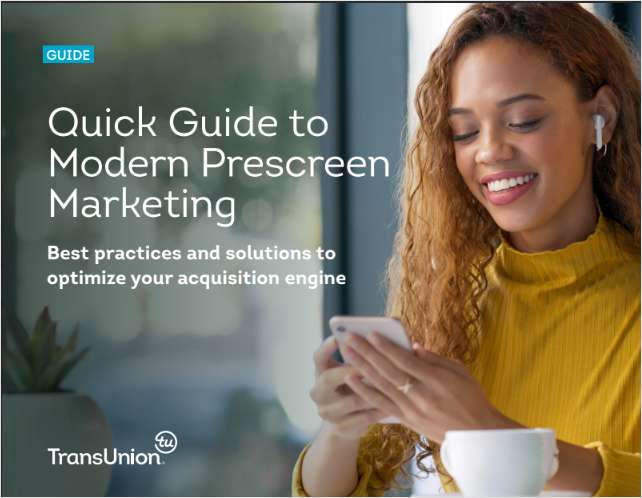WEST PALM BEACH, Fla. – Credit unions haven't had much competition when it comes to financial literacy programs from their banking counter parts, but it appears banks are trying to step up their efforts. Considering recent announcements from such banking giants as Citigroup and Bank of America it seems bankers may be jockeying to position themselves as “the” financial education resource for consumers and a community “investor”. Bank of America Charitable Investments has recently launched a two-year, $15 million program called the Neighborhood Excellence Initiative, “to recognize, nurture and reward organizations, local heroes and student leaders – in 30 of the bank's major communities across the country – that are helping rebuild and revitalize their neighborhoods.” “To help these communities succeed, we had to look beyond the, `one size fits all approach,' and develop a program that supports and nurtures the various stakeholders that together make their neighborhoods vibrant and successful,” said Andrew Plepler, president of the Bank of America Charitable Foundation. The Neighborhood Excellence Initiative is composed of three programs: Neighborhood Builders, which provides $200,000 in grant funding and leadership training over the course of two years to two neighborhood nonprofit organizations working to promote vibrant neighborhoods; Local Heroes, which recognizes and honors five community heroes per year in each of the 30 selected communities whose achievements and leadership on local issues contributes significantly to neighborhood vitality. Recipients will be able to direct a $5,000 contribution to an eligible nonprofit of their choice and will be celebrated at a public ceremony; and Student Leaders, which recognizes five high school students in their junior or senior years in each of the 30 designated communities. To further their personal and educational growth, each student will participate in an eight-week paid summer internship with a community-based organization, as well as a mentorship program arranged by the bank. “It is an interesting strategy, the banks are trying to take what credit unions do best and use it as quite the photo opportunity,” said 20-year old brass|media President Bryan Sims, who publishes a financial magazine written by and for young adults age 18 to 24. “It is time for credit unions to be even more proactive rather than reactive especially if they are looking to make that transition beyond baby boomer members to reaching Generation X or Y.” In addition, Citigroup and the Citigroup Foundation have recently announced a three-pronged global financial education initiative citing the “growing consumer need for financial literacy”. The first step involves a 10-year, $200 million commitment to financial education built around the theme of “knowledge is the greatest asset”. In addition, the bank has not only created a new Citigroup Office of Financial Education but also launched a global initiative designed to allow employees to take one day off each year to support financial education and other charitable causes. Heading the new Citigroup Office of Financial Education is former Jump$tart Coalition for Personal Financial Literacy Executive Director Dara Duguay. “Our economic future depends on improving the financial literacy rate, regardless of age. You're never too young or too old to learn how to manage your money,” said Duguay. “Our work will be guided by one fundamental truism. `When it comes to money-your money, your business's money or your institution's money-knowledge is your greatest asset.' ” The “ call to action” went out around the world at Citigroup financial-education events in Latin America, North America, Europe, the Middle East, Africa and Asia. National Youth Involvement Board Chair LeAnn Achtenberg isn't too worried about the move. Credit unions of course are leaders in financial literacy with CUNA, NAFCU and even NCUA Board members all trumpeting the cause. “First of all, anyone contributing to financial literacy is wonderful,” said Achtenberg. “Studies show it is still not up to par so anyone who can improve that is fantastic. That being said, credit unions are out there every day making a difference in young peoples' lives and they have been involved in that for a long time walking the walk and talking the talk- not because it is the `latest and greatest thing' or because it makes a great public relations statement, but because it is just part of who we are as a movement.” Sims says what big bankers are doing right as far as targeting the younger market is researching their interests and teaming up with music sharing services or AOL instant messenger for promotions. While credit unions may not be able to compete on such a grand scale Sims says they can still look for partnership and cross selling opportunities within their communities that appeal to area young adults during various key life stages. “When I hit 18 I had credit card offers from all these bankers and not one from my credit union and it doesn't make any since because I'd been on their mailing list for at least 10 years. It sounds so basic but playing up events like heading off to college and getting that card in a member's hand before they hit campus and are bombarded in the breezeway with bank credit card offers makes a difference,” said Sims. “And bring the parents in. I became a credit union member because my dad is a member. If it weren't for my parents being part of a credit union there is no way I'd be a member because I wouldn't know about the credit union difference. It's like the Avis campaign `they try harder', credit unions should be aggressively pitching what makes them stand out from their competition.” Achtenberg adds that the credit union commitment to young people and financial literacy makes for a long-term return on investment. A recent NYIB listserve chat finds that most credit unions believe now is the time to make a difference in a young person's life while they are still in a brand development stage. “Credit unions are there to educate them about money and give them this great start in life before they even hit that borrowing stage,” said Achtenberg. “And we are doing it but we need to share our stories and numbers so that we can continue to show Congress that credit unions are different and we do believe in social responsibility. For 2002-2003 credit unions reached 213,036 students and that proves we're out there everyday not just a one-time event. We need to talk about it and it can be another tool in our warchest.” [email protected]
Complete your profile to continue reading and get FREE access to CUTimes.com, part of your ALM digital membership.
Your access to unlimited CUTimes.com content isn’t changing.
Once you are an ALM digital member, you’ll receive:
- Breaking credit union news and analysis, on-site and via our newsletters and custom alerts
- Weekly Shared Accounts podcast featuring exclusive interviews with industry leaders
- Educational webcasts, white papers, and ebooks from industry thought leaders
- Critical coverage of the commercial real estate and financial advisory markets on our other ALM sites, GlobeSt.com and ThinkAdvisor.com
Already have an account? Sign In Now
© 2024 ALM Global, LLC, All Rights Reserved. Request academic re-use from www.copyright.com. All other uses, submit a request to [email protected]. For more information visit Asset & Logo Licensing.









